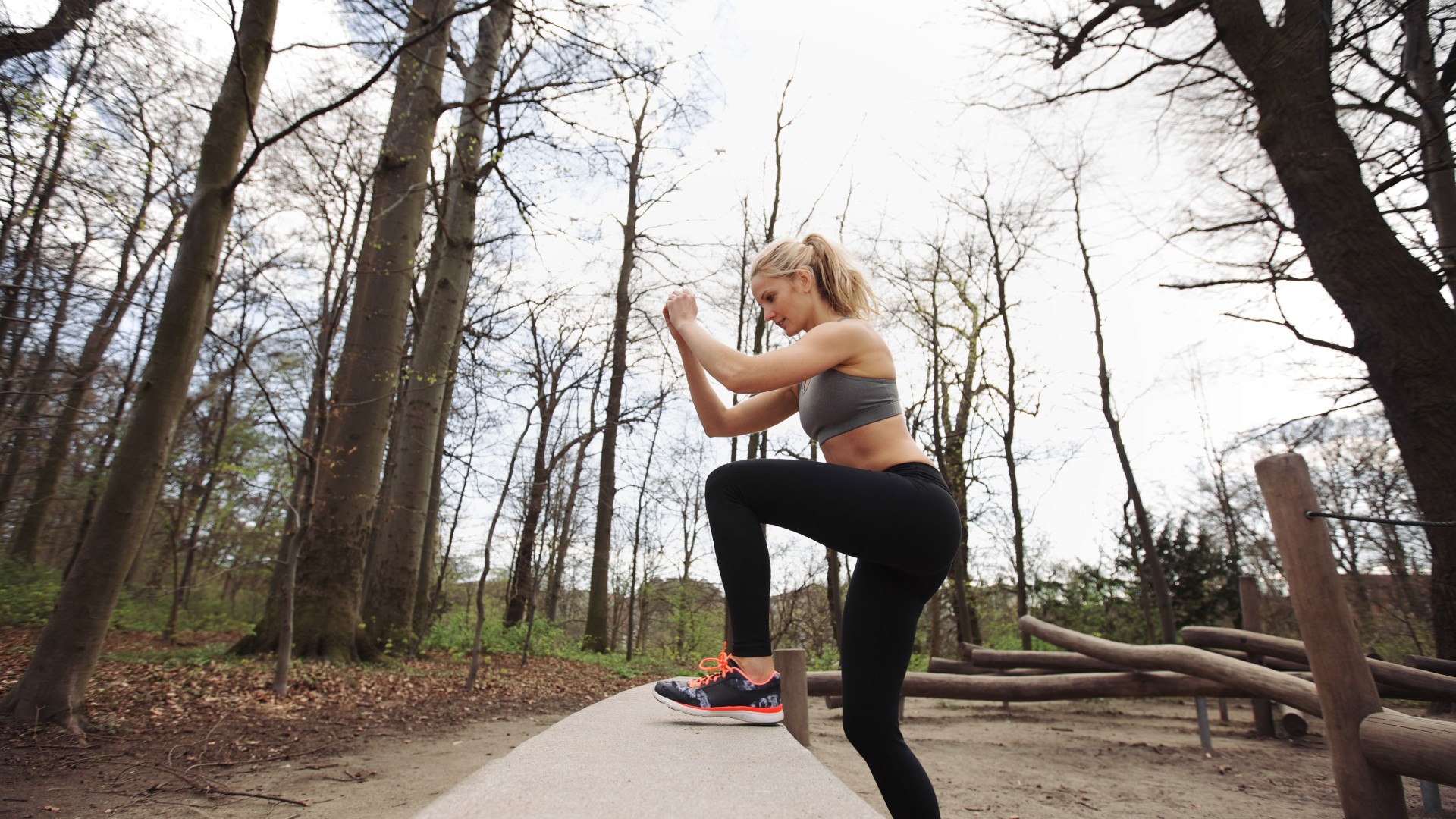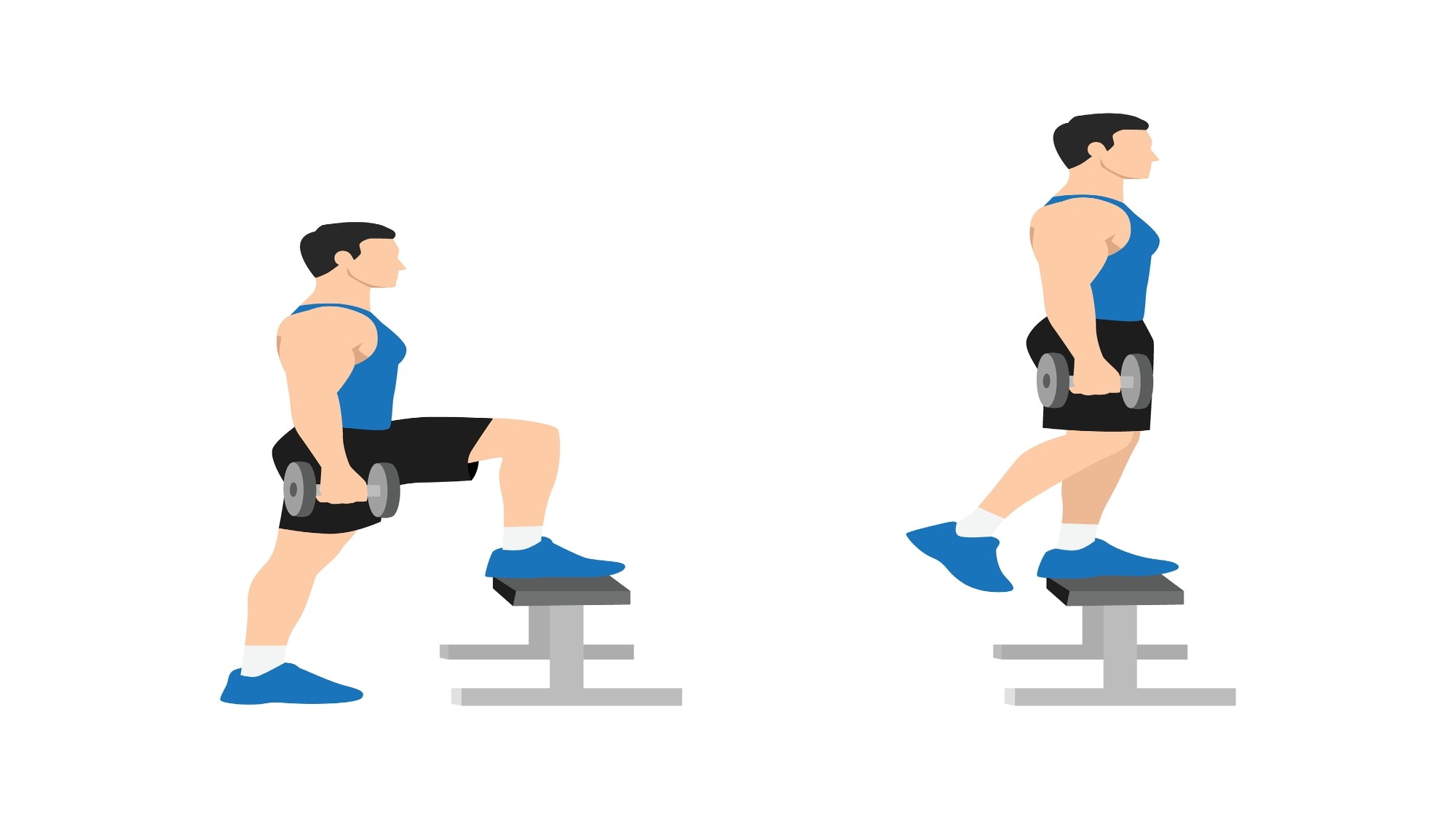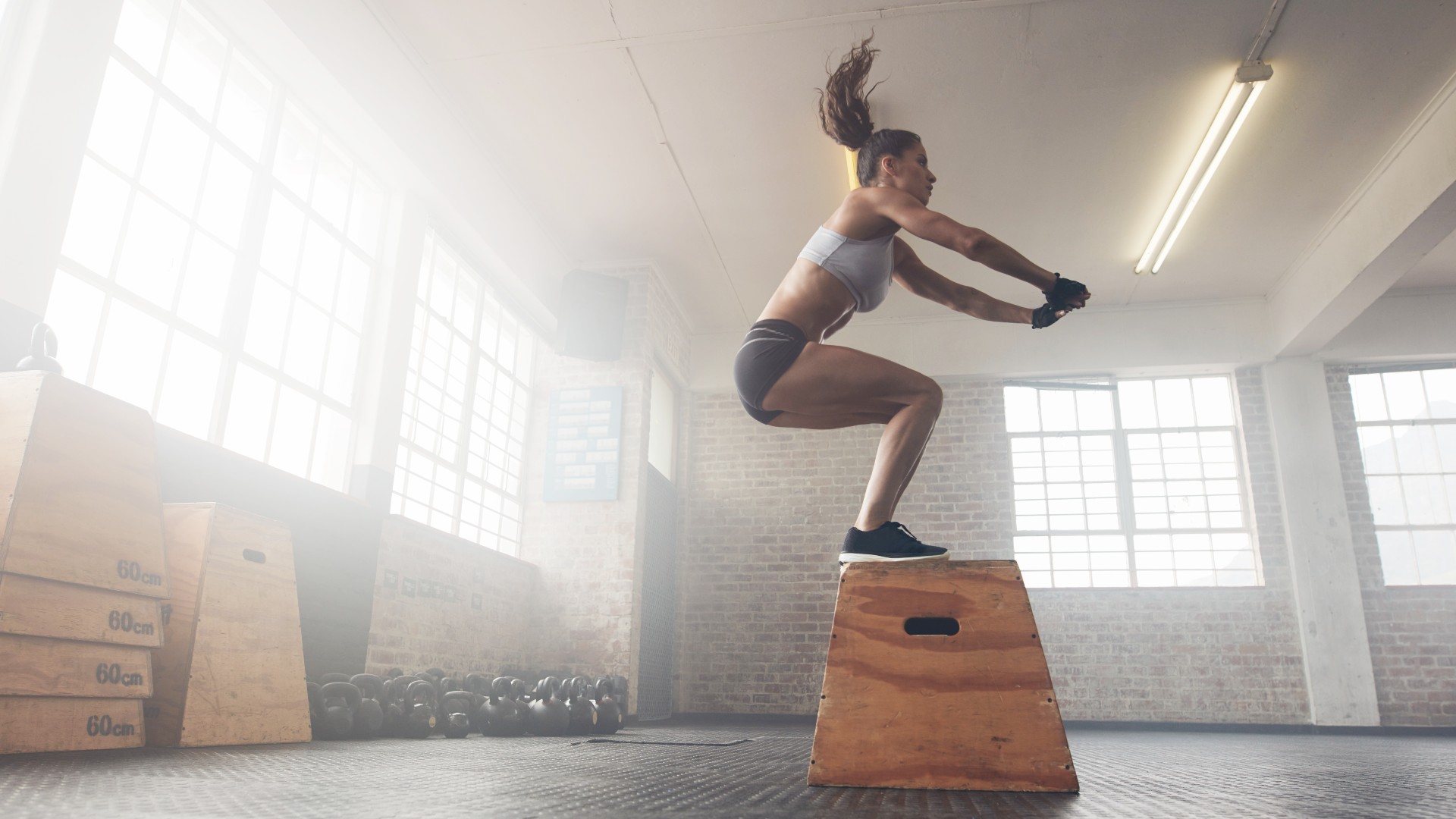
Step-ups have been around for a while and are featured heavily in group classes like Les Mills and CrossFit. That’s because the beginner-friendly resistance exercise works your legs and butt hard while scaling to any fitness ability, so I decided to do 560 of them in seven days (80 a day for a week).
The step-up is a leg-torching exercise that targets the muscles in your quadriceps, hamstrings, core, and gluteal muscles. You could use step-ups in an aerobic workout with a lower height and faster speed, or a strength program using a heavy weight and higher step.
However you choose to program them, one thing’s for sure — they will burn. And by adding load (I encourage kettlebells or the best adjustable dumbbells) the muscles will work even harder. Looking for a lower-body conditioning exercise? Look no further. Here’s what happened when I did 560 weighted step-ups in a week.
How to do a step-up

You can use any equipment for the exercise, but I recommend a plyometric box, bench, or step. Practice with your body weight first. If you wan to add weights, either barbells, dumbbells, or kettlebells work best. You can find out which weights win the barbells vs dumbbells war here.
Popular weighted step-up variations include holding weights by your sides, racking them onto your shoulders, or elevating them in front of your chest — called a goblet hold. Altnernatively, hold the weight overhead to develop core, back, and shoulder strength.
How to do step-ups:
- Stand with a step, box, or bench in front of you
- Hold your weights in the preferred position
- Step up with your left foot, ensuring your heel plants down as it lands
- Extend the left leg to stand
- Bring right leg to meet left
- Bend your left leg and lower your right leg to the floor
- Step the left leg down to meet the right leg.
Benefits of step-ups
Unlike box jumps (see below photo) that require explosive power to jump up with both legs at once, step-ups are more accessible for beginners and kinder to your joints. Both exercises build strength in the lower body and glutes, but this variation protects the knees, whereas box jumps train the fast-twitch muscle fibers responsible for explosive moves like jumping.
Sign up to get the BEST of Tom's Guide direct to your inbox.
Get instant access to breaking news, the hottest reviews, great deals and helpful tips.

I did 560 weighted step-ups in a week - here's what happened to my legs
Here’s what high-rep weighted step-ups did to my legs.
Day 1
I settled on plyo box step-ups and tackled 80 reps per day using a heavy dumbbell in a goblet hold. Rather than going in cold, I designed a conditioning program like this metabolic conditioning MetCon workout, sweating through 50 calories on the ski erg, 50 push-ups, then 80 weighted box step-ups. The goal was to fatigue my upper body and not ruin myself for the step-ups. I found this method far more engaging and could adapt it throughout the week.
Day 2 and 3
During the next few days, the high reps worked my quads hard, and I focused on an upward trajectory, pressing firmly through my standing foot as I pushed through my leg rather than leaning forward. Each time I hit around 40 reps just halfway through, my legs were on fire (this never got easier to move past).
Day 4
I decided to mix it up. To make the exercise harder, I flipped the box onto a higher setting and moved slower — a technique called time under tension which I discuss in the article 5 clever ways to build muscle without lifting heavier weights.
Moving slower with a heavier weight leans toward strength training (if you prefer to work on explosive power or aerobic activity, go lighter and move fast). The higher angle hit my posterior chain with more focus, including the hamstrings and glutes, and I finally got the glute pump I wanted.
Day 5
My stronger side picked up the slack from fatigue, and I began to lean into my right leg more. When the body works unilaterally (one side at a time) to push your body weight up, the weaker muscles have nowhere to hide. This happens to us all.
Your body, trying to protect you, might find ways to make the exercise easier. These small cheats could put extra strain on your body in the long run. The tells for a step-up are leaning forward, which strains the lower back, and leaning over to one side. Try to keep your spine tall and drop down weight if you need to. This should help you correct your form before you add intensity.
Day 6
By day six, my hips felt tight, so I added these hip mobility exercises for hip flexor pain and checked I fully extended my hips at the top of every rep. My lower back also felt sensitive, and not wanting a telling off from my long-suffering chiropractor, I dropped weight to maximize rep efficiency and not pull focus from the task at hand.
By this point, my muscles were on fire, but I felt like I had gone over the hill and reps (weirdly) felt more comfortable (just). Adjusting my foot positioning and driving through the standing leg helped me to drive up with power.
Day 7
Phew, 560 reps later, and I was glad to see the back of this fitness challenge. Step-ups are part of functional training, mimicking daily life, like climbing the stairs. The move is also a compound exercise — a multi-joint, multi-muscle move. As the muscles aren’t working in isolation, this was a torcher from core to toe. Safe to say I didn’t do a leg program that week.
Step-ups: Verdict
A word of warning, no one needs to do 560 step-ups as part of their training program. You should always program rest and active recovery to help your body recover throughout the week. Overworking any given muscle group could lead to injury, but separating leg days with core (check out the best ab exercises) or upper body is a good compromise.
Step-ups help develop knee strength, but if your knees turn in, out, or pass over your toes, focus on stabilizing your leg before adding weight. Leaning gently forward isn’t a sin and could increase activation in your glutes and hamstrings, but avoid rounding the spine and dumping into your lower back. Overall, step-ups are a great exercise for runners looking to develop lower body strength and power, especially during outdoor training, but I might archive this challenge.
More from Tom’s Guide

Sam Hopes is a level 3 qualified trainer, level 2 reiki practitioner and senior fitness writer at Tom's Guide. She is also currently undertaking her Yoga For Athletes training course. Sam has written for various fitness brands and websites over the years and has experience across brands at Future such as Live Science, Fit&Well, Coach, and T3.
Having worked with fitness studios like F45 and Virgin Active, Sam now primarily teaches outdoor bootcamps, bodyweight, calisthenics and kettlebells. She also coaches mobility and stretching-focused classes several times a week and believes that true strength comes from a holistic approach to training your body.
Sam has completed two mixed doubles Hyrox competitions in London and the Netherlands and finished her first doubles attempt in 1:11.
